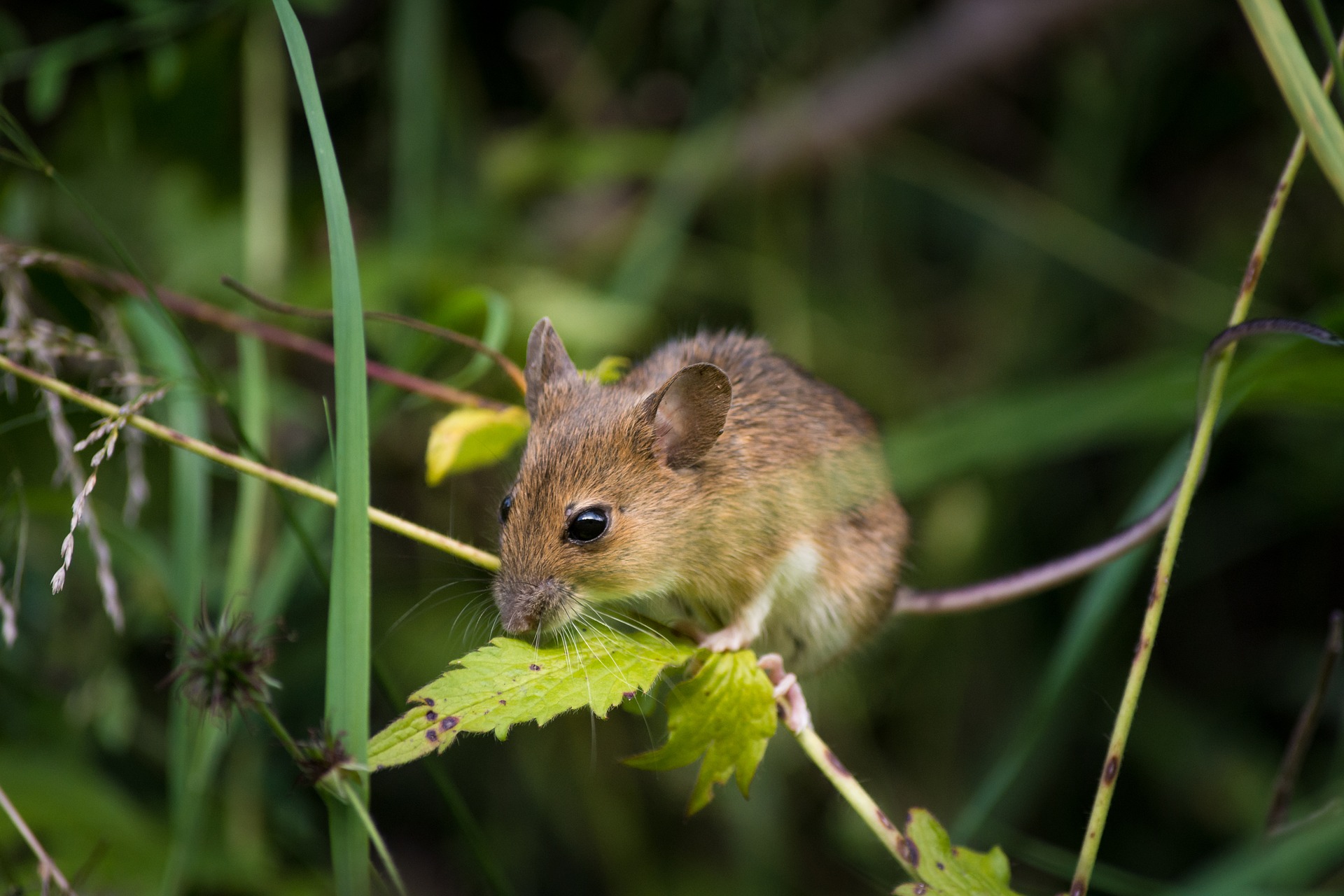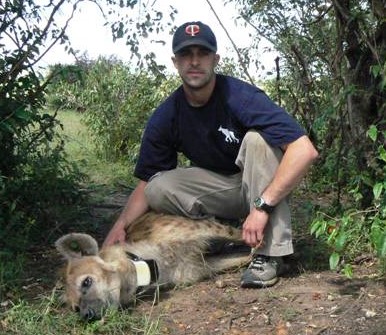
Researchers have traditionally relied on results from experiments carried out on lab mice. Since they are born and bred in controlled conditions, the results from these experiments are ideal in the sense that they are verifiable and replicable. But it is precisely these qualities that limit the usefulness of the results. Their genetic makeup and immune systems do not replicate those of wild mice, which more closely resemble humans. Nor do the pristine lab conditions bear much resemblance to naturally occurring environments in the wild.
To correct this, Stephan Rosshart from the University Medical Center in Freiburg, Germany, introduced wild mice into labs to create more realistic conditions, as reported in the German magazine Spiegel.
During his research work in the U.S. at the National Institutes of Health, Rosshart set out peanut-butter baited live traps in barns to catch wild mice. Lab mice embryos were then implanted into wild females who passed on their immune system to their offspring. Subsequent generations of mice also shared this more natural immune system.
On mice and men
Rosshart went on to show that the test results from these wild mice were more accurate than those originating from the usual lab strain. In two instances, he and his team proved that tests with lab mice would have led to incorrect conclusions. One case involved tests with sepsis and the other an autoimmune disease. In lab mice, the medicine being tested improved their condition. In humans, it would have been not just ineffective but would have led to even more severe symptoms. In contrast, in the wild mice the symptoms more closely resembled those of humans.
The team has also discovered that the wild mice are more resistant to viruses than the lab variety. But why? The researchers aim to discover the mechanisms behind how the immune system deals with viral infections. Some viruses do not affect all wild mice; they seem to be immune. “The natural differences in the animals’ immune systems remain once they are in the lab,” says Rosshart. He sees an advantage in this. “Humans are also different.”

The vaccine from the barnyard
The current global pandemic makes it urgent that science take advantage of the great biological diversity available in nature. To accomplish this, more types of animals should be researched under a wider range of environmental conditions. Dr. Andrew Flies from the Menzies Institute for Medical Research at the University of Tasmania, Australia, calls for research on a greater variety of animals – outside the lab. In an article in Science magazine, he recalls that the smallpox vaccine was developed by simply observing that milkmaids who got cowpox, a disease similar to smallpox, were subsequently immune to the much deadlier disease.

Graphic – public domain, on the Museum of Healthcare, Canada website
“Most emerging infectious diseases originate in domestic and wild animals and the coronavirus disease 2019 (COVID-19) pandemic is a stark reminder of the need to think more holistically about the health of humans and animals,” says Flies.
“The immune system has evolved over millions of years,” Flies continues. No model organism can completely replicate another species, therefore “the comparison of DNA and protein sequences across the tree of life is a straightforward and cost-effective means to select the most appropriate animal models for the question at hand.” The increased number of fully sequenced genomes now allows rapid comparison of gene networks across more than 200 species.
Next – a vaccine from the desert or savannah?
The movement to incorporate the “wild side” into research goes far beyond adding wild mice to a laboratory situation. Birds, reptiles, and hyenas have been studied and found to yield information that may give important immunological clues to finding ways to combat pathogens in humans. Nanobodies, fragments of antibodies, that are easier to produce than those that originate from mice and humans and could also be used in the fight against COVID-19, for example. As reported in Nature, these were discovered by chance in camels, not exactly an animal that one would associate with lab work.

Flies is a member of the Wild and Comparative Immunology Consortium, an organization dedicated to studying immunology in new species and real-world environments, known as rewilding. Its recent conference in Hobart, located in the Australian island state of Tasmania, brought scientists together to drive this movement forward.
Why is it important to study animals in a natural environment? Flies offers this explanation: “DNA, proteins, and other molecules provide the canvas and paint of biology; the environment is the artist. Give 100 people the same canvas and paint, and no two paintings will come out alike. It is the same with biology and the immune system.”
The lab in your lap
Imagine if every household could contribute to solving global pandemics. Common household pets offer just that: an everyday opportunity to examine the how infections are shared – or not – among members of the household. By studying how the immune systems of different animals react to the same pathogens, scientists can gain valuable insights without the expense of a laboratory. Scientists at a veterinary lab in Harbin, China, did exactly that in their research on cats, dogs and ferrets as reported in Science. Their goal was to determine the susceptibility of the animals to SARS-COV-2 virus.
The researchers discovered that while the virus does not transmit well between many domesticated animals such as dogs, pigs, chickens and ducks, ferrets and cats are more easily infected. Cats in particular are more susceptible to airborne transmission of the SARS-COV-2 pathogen, exhibiting pulmonary infections. The study offers insights into the control of animals related to the spread of the currently raging COVID-19 virus. Veterinarians and pet owners could contribute to such research efforts by providing minimally invasive tissue samples from their pets.

The One Health Concept
Awareness of the need to conduct cross-disciplinary research is increasing. The importance of taking into consideration the entire environment and its inhabitants in efforts to combat disease is known as One Health. This idea emphasizes how humans and animals live together and interact in many ways, making the study of any disease in isolation of limited value.
Since all living beings share the same environment, cross-disciplinary studies are necessary to incorporate all contributing factors. Scientists believes that SARS-COV-2 virus originated in bats in China, but they are not entirely sure exactly how that occurred. Deeper investigations on the impact of pathogens on animals and their interaction with humans will better equip society to contain the spread of such diseases or better yet, prevent them from spreading in the first place.
Rewilding research supports biodiversity
The world is currently experiencing a rapid increase in the extinction of species. Scientists agree that this is the result of mostly human interference and destruction of the environment. The increase in global travel and trade has also paved the way for the globalization of diseases. As reported in Science magazine, a fungus (Batrachochytrium dendrobatidis) was identified in amphibians ca. 20 years ago which has since decimated populations of amphibians – on a worldwide scale. This fungus has caused serious population declines in over 500 species and is believed to have driven 90 species to extinction.
By introducing a greater number of species and more real-world environments into the field of immunology, scientists can gain greater insights into the exact causes of such mass extinctions, caused not only by habitat destruction but also by diseases which are as yet little understood.
What would cross-disciplinary cooperation look like in the real world? Flies says: Veterinarians, wildlife biologists, and disease ecologists should identify the key immunological questions and barriers in their research and then work together with people from other disciplines with the expertise and technical skills to overcome those barriers. He emphasizes that the full potential of this emerging field cannot be achieved without support from the wider research community and with sufficient funding.
See also:



